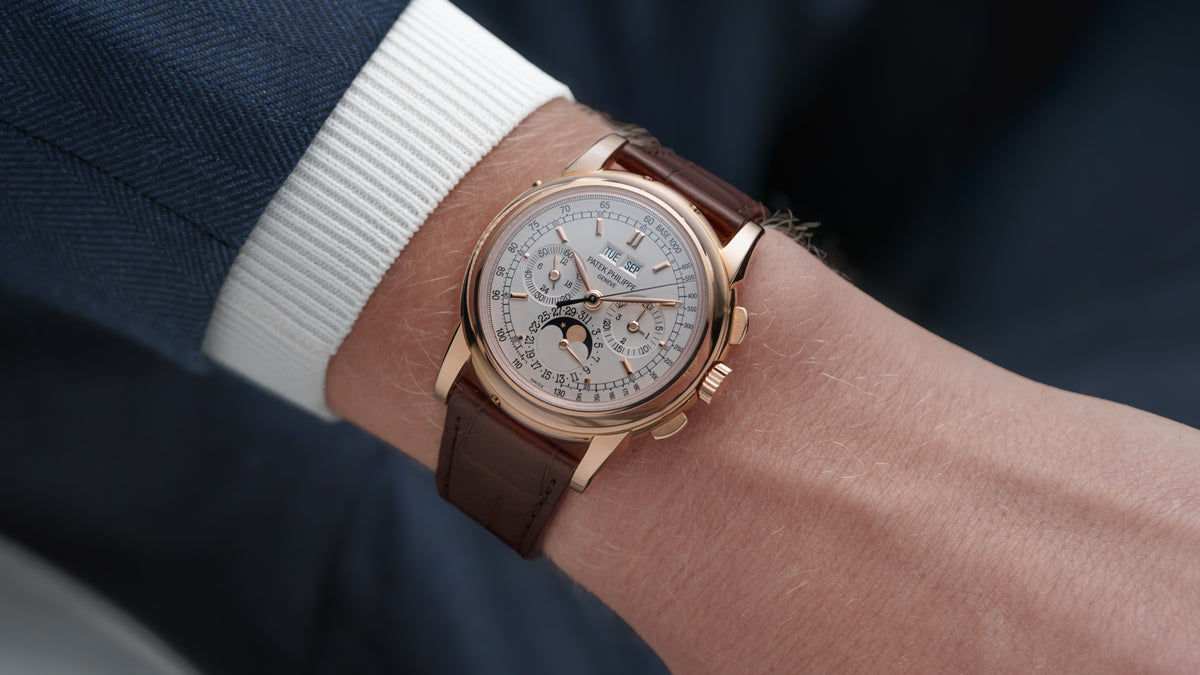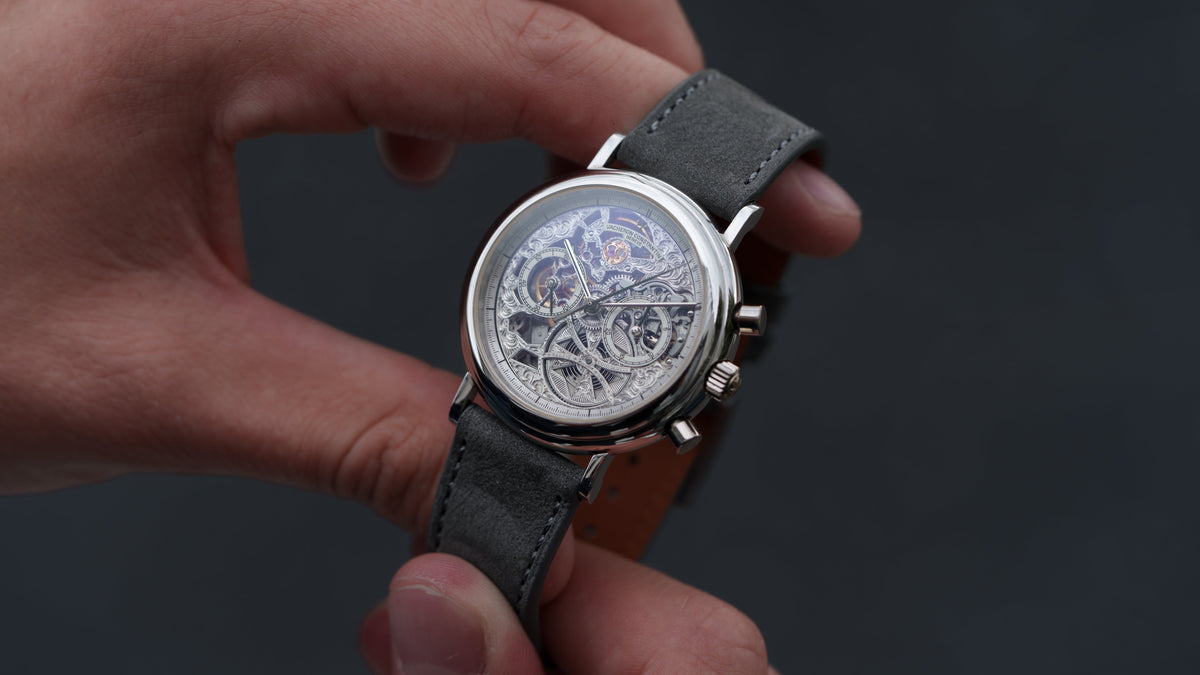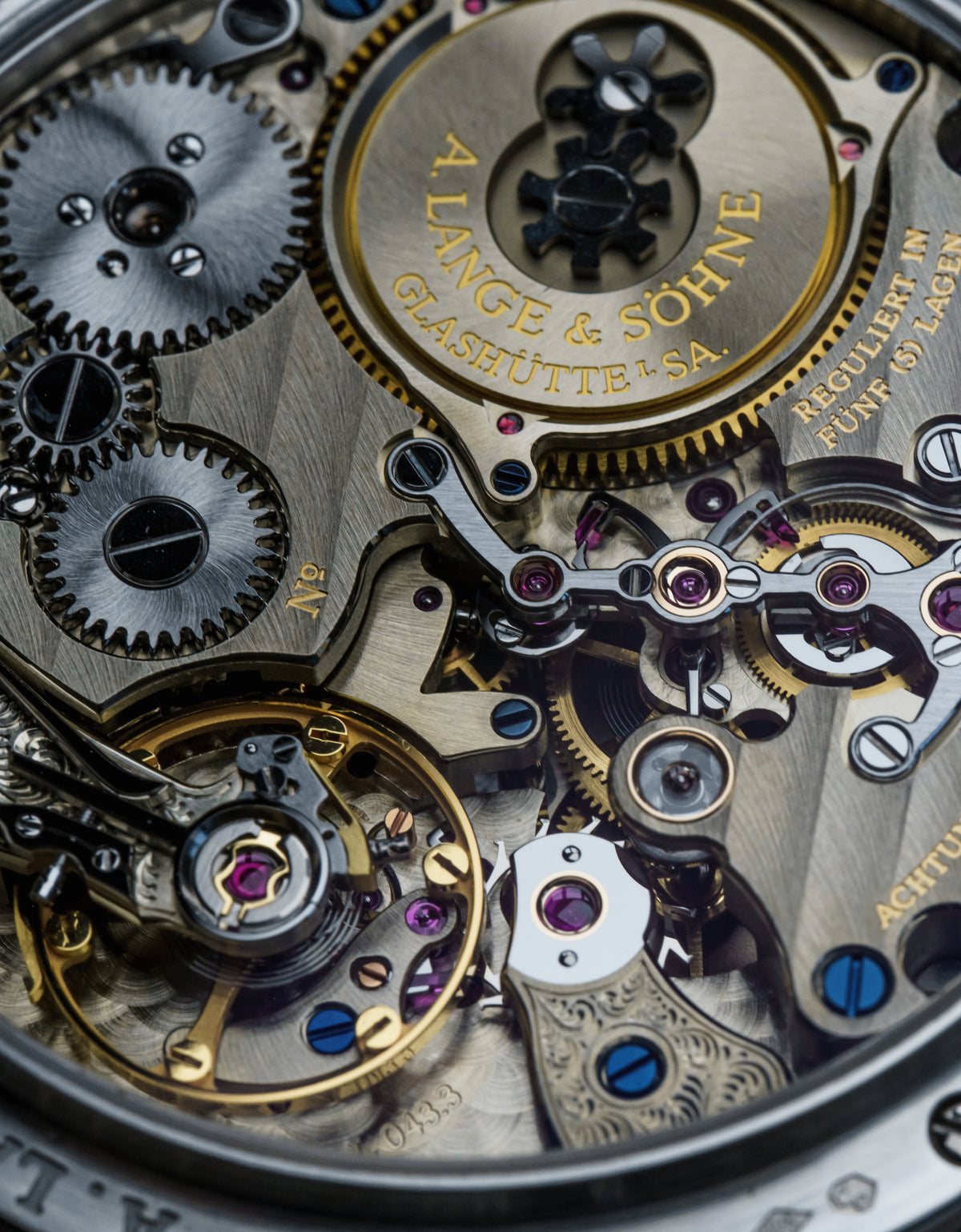Jasper Dial 18039 Rolex Day-Date
Of all standard production Rolex models, white precious metal and a jasper dial has to be in the top five of outright rarity. You’ll see jasper in yellow gold with some frequency, a handful yearly popping up in the market. But in white precious metal, not gem set, fewer than 10 are known. My current count is nine. You can’t just swap dials here, the white text was made for white metal only (the gold dial’s text is gold). Plus, dial aperture surrounds are in matching precious metal. This dial was made for this case, despite the fact that 90% of this particular Day-Date’s value is now in its dial. Think of it like the JPS 6264 of early Day-Dates, 10ish known and impossibly collectible. Only green. Very green.
In Day-Dates, Jasper and Bloodstone get used interchangeably, but they’re all referencing the same quartz. Jasper, in Rolex, can mean full green or full red. But in green, some exhibit naturally occurring veins of red hematite, such as the light red spots on this example. Greater quantity of hematite usually gets categorized as Bloodstone. Either is exceptionally uncommon in white metals. Most documented are in white gold, 18039, but two are known to the market in platinum as well, 18206. You’ll find some previously retailed my AVW, Menta, in the collection of @johnson167, or in Pucci Papeleo’s book on the Day-Date and together with a handful of long-ago auction results and that’s all we know about. Rarer than a Qaboos Daytona, at least at the moment.


Now, it should be noted that this dial is signed with T SWISS T but has non-luminous hands. This is entirely correct. Prior to the 2000s, Rolex would frequently print all dial blanks at once, all with the same signature. Luminous or non-luminous hands would be applied depending on the dial. It seems careless, but is a mark of charm indicating how Rolex operated back then. Just like the Eastern market no lume dials are also signed T.
Sale results are few and far between, benchmarking one is a tough ask. A perfect bloodstone from AVW sold at 344K USD earlier this year. Even with fractures, they’ll trade hands above 100K. But in the modern era we have precisely zero auction results to go by. The estimate here is 80-160K, but that’s a typically low range. I would expect more in the 300-400 range, however do yourself a favor and inspect it in person. If you’re bidding, you should be certain there isn’t a hairline in sight or at least bid appropriately. Barring khanjars, it just may be the ultimate hardstone dial Rolex.









































0 comments
Write a Comment